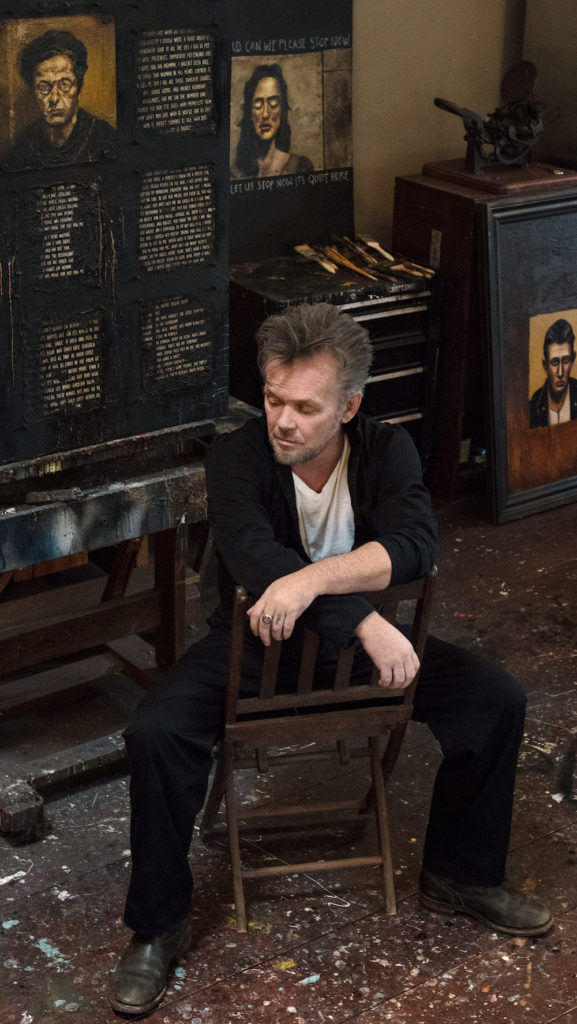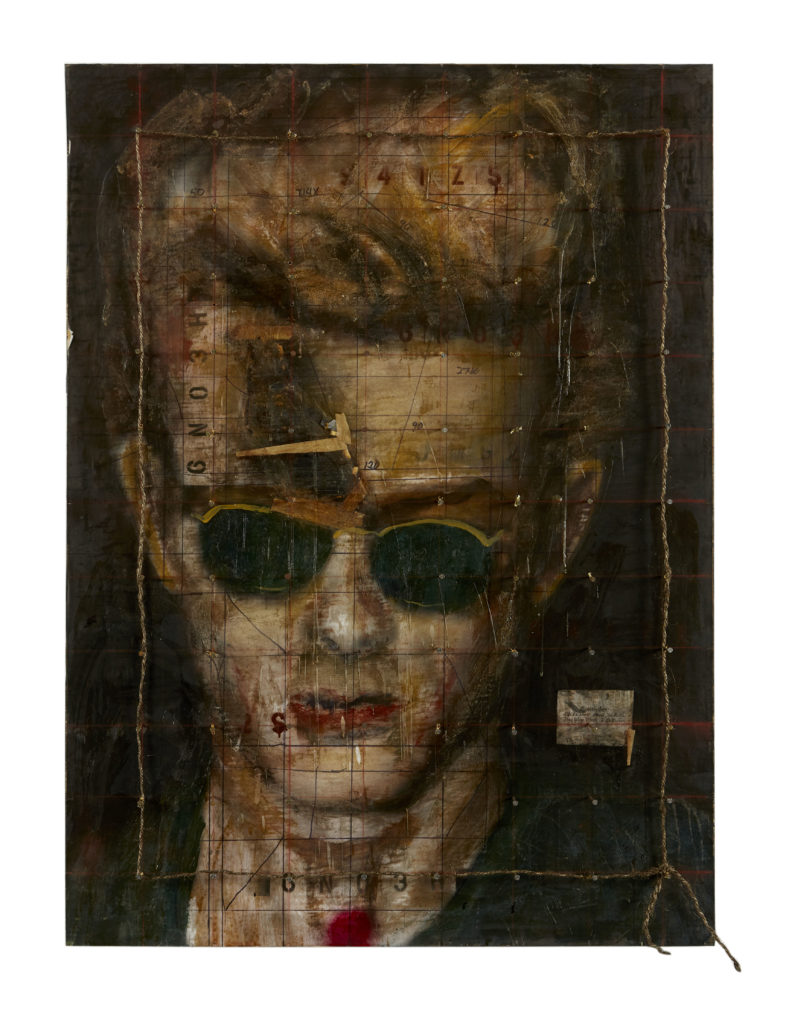[ad_1]

John Mellencamp in 2018.
MYRNA SUAREZ
The musician and artist John Mellencamp stumbled into his first record deal while traveling to New York City from his home state of Indiana in search of an art school to attend. It was the mid-1970s, and the future star, who at various points in his long career has also been known as Johnny Cougar, John Cougar, and John Cougar Mellencamp, had just graduated from Vincennes University, a small two-year college in Indiana. “I figured while I was in New York, I might as well see if I can get anything going on [the music] end,” Mellencamp, who spent his teenage years playing in bar bands, recently told me over the phone. “And, as it turns out, at 20 years old, 21 years old, New York Art Students League wanted me to pay them money, and the record companies wanted to give me money.”
Nevertheless, Mellencamp, who initially came to art through his mother (who was a painter), kept making art in his spare time, and became more serious about it starting in the late 1980s. Jumping forward a few decades, Mellencamp opens a new exhibition of paintings and assemblages tomorrow at ACA Galleries in New York.
Mellencamp’s rock-and-roll revelation led him on a path that would reach one peak in the ‘80s with blockbuster classics like American Fool, Uh-Huh, and Scarecrow, before taking a three-year break at the tail end of the decade. “In 1988, I was sick of being in rock bands,” he said. “I was sick of playing in front of people, I was sick of the whole thing. The music business is, you know, it’s like anything else, it’s a big fucking game. Just a big game. Who’s number one, can you sell out stadiums, and I was part of that. My girlfriend said it to me best, she’s a famous actress”—Mellencamp has had an on-again, off-again relationship with Meg Ryan—“she said, ‘You know, John, we’ve both been to the moon, and we both found that there’s nothing up there.’ She was absolutely right.”
Mellencamp told me that although he always worked intensely on his daily art practice, it wasn’t until some encouragement from a songwriter and artist friend that he even considered showing what he made in public. “He said, ‘What are you going to do with all this stuff?’ I said, ‘Well, I only do this for myself.’ You know, when you’re in a rock band, you’re around people all the time. You know, there’s maybe 40 guys on the road crew, you got six or seven guys in the band, I’m the leader of the band, so all questions and answers have to come through me, you know, it’s like, OK, enough of this crap. So painting is a way for me to be by myself, which I love, so that really helped me continue on with my music.” Mellencamp came roaring back to music in the 1990s and continues to find success with a sound that has gotten progressively less commercial as the years pass.
Mellencamp’s first public art show was a two-person affair in 1989 with Miles Davis at Triangle Galleries in Beverly Hills. Since then, he has staged exhibitions at institutions including the Butler Institute of American Art in Youngstown, Ohio, and the Tennessee State Museum in Nashville. His paintings, which is mostly figurative, can at times feel like a certain strain of German Expressionism as seen through the eyes of an earnest heartland outsider. The 2017 work I’m Trouble and I Don’t No Why delves into self-portraiture, with multiple Mellencamps—smoking, brooding—sharing space with a cross. The painting’s title is scrawled at the bottom of the work. “I really take no credit for subject matter,” Mellencamp said. “The only thing that I really pay attention is that I like things to be rough. I like to keep things in a garage. The music is a garage sound, the paintings are like you found them in a garage. It’s all coming from the same place.”
The new ACA exhibition will mark the first time that Mellencamp has shown assemblages—another freethinking step for an artist who has, despite fame, continued to base himself in Indiana and also continued to produce work that is first and foremost for himself. “Every day I write something, or I work on a painting or I work on an assemblage, every day I do something,” he said. “And, if I don’t, then I work on being in trouble. At 66, I’m not really looking for that much trouble anymore, so it really is helpful to be able to live a life of freedom the way I’ve been able to.”

John Mellencamp A Bed of Nails, 2017, mixed media on plywood.
COURTESY ARTIST/ACA GALLERIES
[ad_2]
Source link

